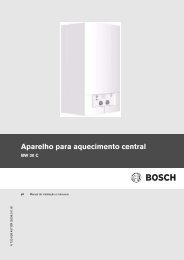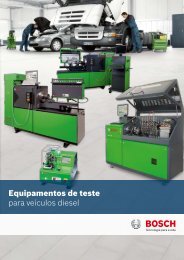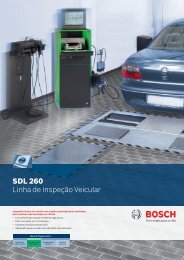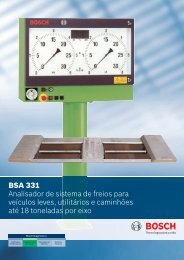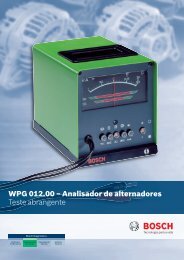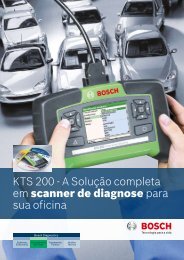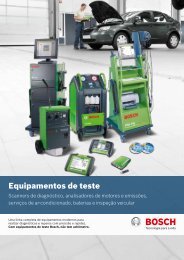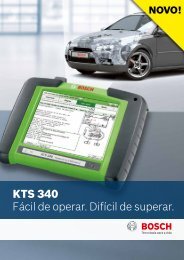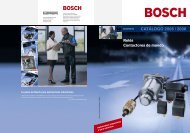Bosch Automotive A product history
Bosch Automotive A product history - Bosch worldwide
Bosch Automotive A product history - Bosch worldwide
- No tags were found...
Create successful ePaper yourself
Turn your PDF publications into a flip-book with our unique Google optimized e-Paper software.
24 | Supplement 2 | Journal of <strong>Bosch</strong> History<br />
data – from the brake control system, for<br />
example – can now be utilized for the functions<br />
of other systems. The control system<br />
of the ESP® electronic stability program,<br />
for instance, can intervene in engine management<br />
and reduce engine power if the car<br />
shows signs of skidding. And as a further<br />
way of preventing hazardous situations, the<br />
brake system can utilize the radar data from<br />
the adaptive cruise control system. It can<br />
then either perform automatic emergency<br />
braking or, if impact is unavoidable, can<br />
protect occupants by activating the airbags<br />
faster.<br />
As late as the 1960s, <strong>Bosch</strong> automotive<br />
technology was still developed exclusively<br />
in Germany. To a large extent, it was also<br />
produced there. This situation has changed<br />
fundamentally over the past five decades.<br />
Today, <strong>Bosch</strong> has manufacturing sites on all<br />
continents of the world. By comparison, the<br />
development of <strong>Bosch</strong> <strong>product</strong>s in various<br />
countries outside Germany is relatively new.<br />
Developing <strong>product</strong>s in this way enables<br />
components and complete systems to be<br />
developed to meet specific market and<br />
regional requirements. The engine management<br />
system for a premium-class vehicle<br />
in Europe, for example, must meet highest<br />
quality standards in terms of performance,<br />
comfort, and handling. An inexpensive<br />
compact car in India or China, on the other<br />
hand, calls for basic functions at low cost<br />
and robust components that can cope with<br />
widely varying qualities of fuel and longterm<br />
operation on bumpy roads. This, too,<br />
calls for state-of the art technology. It’s just<br />
another way of looking at it.<br />
A divisional structure emerges<br />
The increasing complexity and variety of<br />
components is reflected in the ongoing<br />
development of the organizational structure<br />
of the units that develop, test, manufacture,<br />
and market them. In 1959, a divisional<br />
structure was introduced at <strong>Bosch</strong>.<br />
The divisions are responsible for certain<br />
Milestones<br />
1897 1902 1909 1913 1914 1921<br />
Magneto ignition<br />
device for automobiles<br />
Lubricating pump<br />
(oiler)<br />
Starter<br />
Horn<br />
High-voltage<br />
magneto ignition<br />
system with<br />
spark plug<br />
Headlights, voltage<br />
regulator, generator<br />
(<strong>Bosch</strong> automotive<br />
lighting system)



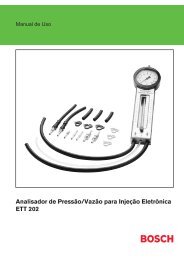

![Guia de instalação do ESI[tronic] Startcenter - Bosch](https://img.yumpu.com/53542449/1/190x135/guia-de-instalaaao-do-esitronic-startcenter-bosch.jpg?quality=85)
